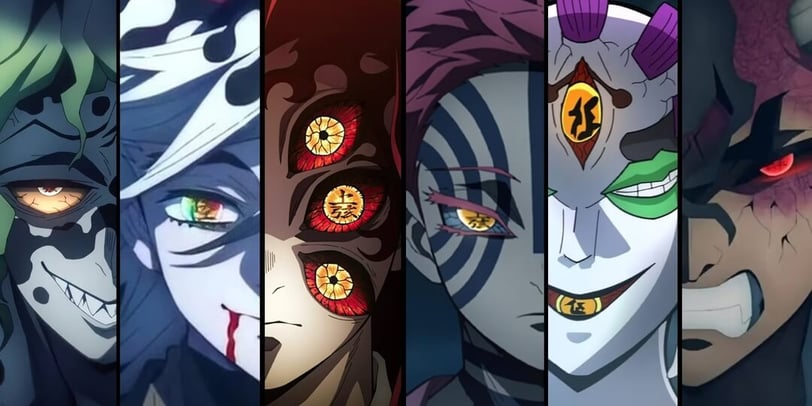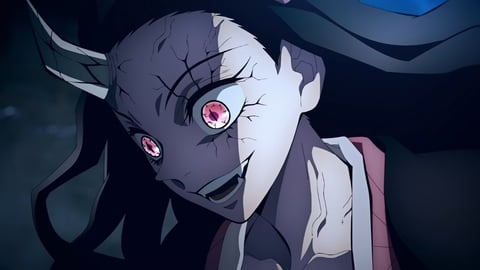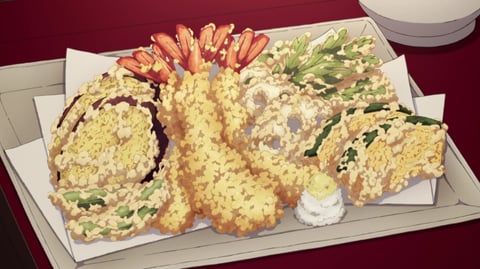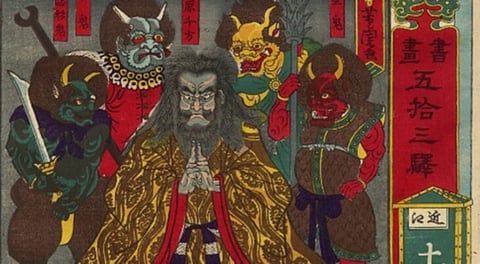Can Demon Slayer Demons Eat Human Food? Find Out Now!
Discover if demons in Demon Slayer: Kimetsu no Yaiba can consume human food. Explore their biology, psychology, and symbolism to uncover the truth about their unique dietary habits. Click to dive into this fascinating analysis!
DEMON SLAYER
Anime Fever
8/8/20247 min read


The anime and manga series Demon Slayer: Kimetsu no Yaiba has captured the hearts of fans worldwide with its rich storytelling, compelling characters, and unique lore. Among the many intriguing aspects of the series are the demons—once-human creatures who have been transformed by Muzan Kibutsuji into powerful, bloodthirsty beings. One question that often arises among fans is whether these demons can eat human food. This article explores this question in detail, delving into the biology, psychology, and mythology of the demons in Demon Slayer to provide a comprehensive answer.
Understanding Demon Biology
To address whether demons can eat human food, it's essential first to understand their biology. Demons in Demon Slayer are created when a human ingests the blood of Muzan Kibutsuji, the first and most powerful demon. This blood transforms the human into a demon, fundamentally altering their physiology.
Metabolism and Nutritional Needs
The primary source of sustenance for demons is human flesh and blood. Consuming humans not only satisfies their hunger but also enhances their strength and regenerative abilities. This need for human flesh is not merely a preference but a biological necessity. Without consuming humans, demons become weaker over time, unable to heal from injuries, and eventually may lose their minds.
In contrast, human food provides no nutritional value to demons. Their bodies are no longer designed to process or derive energy from the same foods they consumed as humans. This is similar to how certain animals have evolved to eat only specific types of food; their digestive systems can no longer process other types of sustenance effectively.
Taste and Sensation
Another aspect of demon biology to consider is whether they can taste or enjoy human food. While demons retain some of their human senses, including taste, their heightened predatory instincts and the overpowering craving for human flesh make it unlikely that they would find any pleasure in eating regular food. For a demon, the taste of human food might be bland or even repulsive compared to the blood of a living human.
In the series, we rarely see demons interacting with human food, which suggests that it holds little to no significance for them. Their senses and desires are entirely rewired to seek out human flesh, making other types of sustenance irrelevant.
Psychological Transformation: The Loss of Humanity


The transformation into a demon is not just physical but also psychological. Demons lose much of their human identity and morality, becoming consumed by their new predatory nature. This psychological shift further alienates them from the human world, including human customs and practices like eating food for enjoyment or socializing.
The Role of Muzan Kibutsuji
Muzan Kibutsuji, the progenitor of all demons, exerts a powerful influence over those he transforms. He instills in them an insatiable hunger for human flesh, ensuring their loyalty and dependence on him. This hunger is so strong that it overrides most other desires, including any lingering human habits or preferences, such as eating regular food.
Muzan's control over his demons is both a means of survival and dominance. By making them reliant on human flesh, he ensures that they continue to propagate his species and eliminate any threat to his power. This psychological conditioning is a key factor in why demons in Demon Slayer are so detached from their former human lives, including their relationship with food.
Exceptions to the Rule: Unique Cases


While the general rule is that demons do not eat human food, there are exceptions that provide interesting insights into demon psychology and biology.
Nezuko Kamado: The Anomaly
Nezuko Kamado, the sister of the protagonist Tanjiro Kamado, is a unique case in the world of Demon Slayer. After being transformed into a demon by Muzan, Nezuko retains a significant portion of her humanity. Unlike other demons, she does not consume human flesh. Instead, she survives on sleep, which replenishes her energy and allows her to function as a demon without succumbing to her darker instincts.
Nezuko's ability to resist the urge to eat humans and her lack of interest in human food may be attributed to the strong familial bonds she shares with Tanjiro and the memory of her former life. However, it's important to note that even Nezuko does not eat regular food. Her unique method of sustaining herself through sleep further emphasizes that demons have fundamentally different needs from humans.
The Upper Moon Demons
The Upper Moon demons, who are the most powerful under Muzan Kibutsuji, also present unique cases. These demons have transcended much of their human nature, becoming almost god-like in their abilities and desires. For them, the notion of eating human food is likely absurd; their only concern is growing stronger through the consumption of humans and furthering Muzan's goals.
However, some of these demons, like Akaza, retain a semblance of their former human emotions and memories. This lingering humanity might theoretically allow them to remember or even crave human food, but their overpowering hunger for flesh and their allegiance to Muzan make it unlikely that they would indulge in such desires.
Symbolism and Themes: The Role of Food in Demon Slayer


Food in Demon Slayer is not just sustenance but also a powerful symbol of humanity, culture, and connection. The act of sharing a meal is depicted as a moment of bonding and normalcy for the human characters, contrasting sharply with the demons' predatory nature.
Food as a Symbol of Humanity
Throughout the series, food is often associated with warmth, family, and the human experience. Scenes of characters sharing meals are filled with joy and comfort, emphasizing the importance of these moments in maintaining their humanity in a world filled with demons.
For example, Tanjiro often recalls the meals he shared with his family before they were killed by a demon. These memories serve as a reminder of what he has lost and what he is fighting to protect. The contrast between these human experiences and the demons' bloodlust underscores the tragedy of those who have lost their humanity.
Demons and the Loss of Cultural Identity
In contrast, demons have lost all connection to their cultural identity and the rituals that make them human. They no longer partake in meals, a fundamental human activity that transcends cultures and societies. This loss is symbolic of their complete detachment from their former lives and the human world.
The demons' inability or unwillingness to eat human food reflects their severed ties to their past selves. They have become creatures of the night, driven by hunger and violence, with no place in the world of the living.
Mythological and Folkloric Connections


The concept of demons or supernatural beings that consume human flesh is not unique to Demon Slayer. Many cultures have myths and legends about such creatures, often as a way to explain or personify the darker aspects of human nature.
Oni in Japanese Folklore
The demons in Demon Slayer share many characteristics with the Oni of Japanese folklore. Oni are often depicted as malevolent beings who eat humans, symbolizing the destructive and chaotic forces in the world. Like the demons in the series, Oni are feared for their strength and their insatiable hunger for human flesh.
In traditional folklore, Oni are sometimes portrayed as former humans who have become demons due to their evil deeds or because they were corrupted by other demons. This mirrors the transformation process in Demon Slayer, where humans become demons after being exposed to Muzan's blood.
Vampiric Elements
There are also clear parallels between the demons in Demon Slayer and the Western concept of vampires. Both are undead creatures that sustain themselves by consuming the life force of the living, whether through blood or flesh. The vampiric nature of the demons is evident in their need to feed on humans to survive and grow stronger.
However, unlike traditional vampires, who may still indulge in human food as a form of luxury or connection to their past lives, the demons in Demon Slayer are wholly focused on their need for human flesh. This difference highlights the unique approach the series takes to its mythological influences, blending Eastern and Western elements to create a distinctive lore.
Conclusion
So, can demons in Demon Slayer eat human food? The answer is complex. While they may physically be able to consume it, human food provides no nutritional value or satisfaction to them. Their bodies and minds are entirely reconfigured to crave human flesh, making regular food irrelevant at best and repulsive at worst.
The lack of interest in human food among demons underscores their complete transformation from human to monster. They have lost not only their humanity but also their connection to the rituals and practices that define human culture, including the simple act of sharing a meal. The demons' detachment from human food symbolizes their broader detachment from the human world, emphasizing the tragedy of their existence.
In the end, the question of whether demons can eat human food is less about their physical capability and more about what it represents. It serves as a reminder of the stark divide between the human and demon worlds in Demon Slayer, a divide that only characters like Nezuko, who retains some of her humanity, can hope to bridge.
This exploration into the dietary habits of demons in Demon Slayer not only provides a deeper understanding of these creatures but also enriches our appreciation of the series' themes and symbolism. Whether you're a long-time fan or a newcomer to the world of Demon Slayer, the complexities of demon biology and psychology offer much to ponder and discuss.
More: Can Demon Slayer Demons Reproduce? The Truth Revealed!
